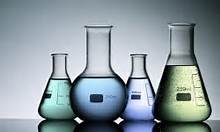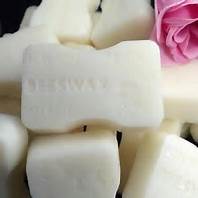Skin Lightners - Toxic Beauty








Skin Lightners - Toxic Beauty
An increasing number of women are using skin lightners either in the attempt to obtain lighter skin, or to lighten freckles, liver spots and age spots, or other hyperpigmented areas of skin. Skin lightening creams are incredibly popular in numerous African countries and amongst the African and Asian women.
Leading industry sources claim that up to 60% of Japanese women use skin whitening products while research conducted in 2004 by Synovate revealed that 38% of 2, 496 women surveyed in Hong Kong, Korea, Malaysia, the Phillipines and Taiwan use skin lightening products.
Skin bleaching agents often use the chemical hydroquinone to decrease the skin's production of melanin, which gives skin its brown colour. However, melanin plays a vital role in protecting the skin from ultraviolet radiation. Hydroquinone is also known to cause cancer in laboratory animals, contact dermatitis in some cases, skin irritation and abnormal skin darkening.
The US Environmental Protection Agency (EPA) conducted research that found that this substance could cause skin tumors in mice exposed dermally and the US National Toxicology Program identified carcinogenic activity in rats and female mice exposed to hydroquinone. In high doses it can result in a disfiguring skin condition referred to as exogenous ochronosis, in which the skin progressively darkens and the collagen and elastin fibres degenerate.
This condition has occurred following the use of 2 percent hydroquinone, but in the US prescription skin lightening creams can contain up to 4 percent of this agent. Occupational exposure to hydroquinone has caused eye injuries and impaired vision, and exposure to strong sunlight after using lightening products containing hydroquinone can reverse the effects of the cream.
In January 2001 the EU banned the use of hydroquinone for over-the-counter- cosmetic products, restricting its use to prescription products used under medical supervision, and other countries have also restricted its use. However , this has stopped hydroquinone-containing skin lightening products being made and sold illegally in the UK, as well as being exported from the UK to countries such as Nigeria, Ghana, Tanzania, Zimbabwe and South Africa.
Early in 2007 a couple in the UK were fined £100,00 and given a nine-month prison sentence each for selling skin whitners to the value of £1 million.
Illegal skin whitening creams often also contain steroids and mercury a toxic chemical that affects the central nervous system, causing tremors emotional alterations, insomnia, headaches and disturbed kidney function when inhaled, and which has been linked to reproductive toxicity, neuro-toxicity and cancer.
The prohibition and restrictions on hydroquinone have led to an increasing reliance on other skin lightening agents, such as kojic acid, which has caused cancer when administered orally in studies on mice and rats, and can result in skin irritation and contact dermatitis. In 2003 kojic acid was banned for use in cosmetic products in Japan, following a 1999 study that found that kojic acid fed to rats in high doses interrupted thyroid function and increased the production of thyroid stimulating hormone (TSH), causing enlargement of the thyroid glands.
Animal studies have also9 demonstrated that kojic acid can cause embryo and systemic toxicity. Kojic acid was also found to be genotoxic ( able to cause damage to DNA that can lead to malignant tumors) in vitro by the International Agency for Research on Cancer (IARC) Kores and Switzerland followed Japan's example by banning the substance as a cosmetic ingredient.
DID YOU KNOW?
Astringent lotions intended for oil-acne skin often consists of high concentrations of the alcohols ethanol and isopropanol (which are penetration enhancers ), and include agents that exfoliate the skin, such as salicylic ac id ( used in the manufacturer of aspirin), another penetration enhancer , that can also irritate the skin, eyes and respiratory tract.
It has also caused reproductive and developmental toxicity in some animal studies and can increase the risk posed by UV radiation by stripping away the protective stratum corneum. Although astringent lotions tend to be aimed at those with oily/acne-prone skin, removing the skin's natural sebum can actually lead to the pores secreting excess oil as the skin attempts to counteract the loss of moisture, as well as more readily exposing the skin to bacterial and environmental assaults. Astringents can also alter the skin's pH level.
Reference: Toxic Beauty: Dawn Fellowship
Articles-Latest
- 8 common mistakes that could be making your dry lips worse
- Dermatologist's insight on shower frequency without harming skin
- ‘Making Black More Beautiful’: Black Women and the Cosmetics Industry in the Post-Civil Rights Era
- A damaged skin barrier can leave you dry, itchy or oily. So, how do you fix it?
- What is collagen and why is it so popular in the beauty industry?
- Skin icing's not just for summer – this cryotherapy technique will get you party season ready
- How much sunscreen should you use and how often do you need to apply it?
- Are AHAs Safe?
- EXFOLIANTS - Cosmetics Unmasked
- ASTHMA - Toxic Beauty
- PHOTOSENSITIVITY - Toxic Beauty
- How to Tighten Your Loose Skin After Weight Loss
- Everything You Need To Know Before Getting A Septum Piercing
- What you should know about treating rosacea in darker skin tones
- Shampoos and Conditioners Designed to Soothe Dry, Itchy Scalps
- 3 things an expert wants you to know before getting filler
- Dissolving filler: everything you need to know
- How thread lifts differ to facelifts – and filler injections
- People are using face tape to minimise wrinkles, but does it work? After asking a plastic surgeon, I tried it for myself
- Reality of Black beauty influencing - making foundation with eyeshadow and unequal pay
Cosmetic ingredients
LOGIN
Who's On Line
We have 15 guests and no members online
Articles-Most Read
- Home
- Leucidal
- White Bees Wax
- Cosmetic Preservatives A-Z
- Caprylyl Glycol
- Cosmetics Unmasked - How Safe Are Colorants?
- Cosmetics Unmasked - Choosing Ingredients
- Cosmetics Unmasked - Colorants And Fragrances
- EcoSilk
- Toxic Beauty - Who's Looking At Cosmetics?
- Cosmetics Unmasked - Fragrances
- Microbes and Cosmetics
- Chemicals Lingering In The Environment
- Microbes and Safety Standards
- Toxic Beauty - Hazardous To Your Health
- Potassium Sorbate
- Yellow Bees Wax
- Synthetics In Cosmetics - The Industry Fights Back
- Fresh Goat's Milk Soap
- Active Ingredients
- What's Happening in the USA - Cosmetic Regulations - Toxic Beauty
- Cosmetics Unmasked - Listing Cosmetics
- Natural Waxes A-Z
- Toxic Beauty - Cocktails and Low Doses
- Natural Butters A-Z



